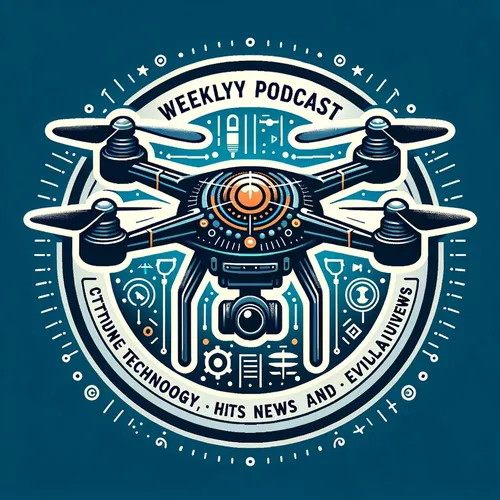Drones Dominate: Ukraine's Swarm Tactics, FAA's New Rules, and the 58 Billion Dollar Question
- Author
- Quiet. Please
- Published
- Sat 31 May 2025
- Episode Link
- https://www.spreaker.com/episode/drones-dominate-ukraine-s-swarm-tactics-faa-s-new-rules-and-the-58-billion-dollar-question--66347870
This is you Drone Technology Daily: UAV News & Reviews podcast.
Drone Technology Daily brings you the latest from the rapidly evolving world of UAVs, with the last 24 hours offering a vivid snapshot of innovation, competition, and regulatory momentum. On the battlefield, Ukraine’s drone units continue to dominate headlines by neutralizing over 89,000 Russian targets in May, highlighting not only an intensified production pipeline but also advances in operational sophistication. Recent operations saw Ukrainian drone operators deploying precision strikes on concealed Russian armored personnel carriers, demonstrating both the reach and agility of modern UAV tactics. These developments illustrate how drones are redefining mechanized warfare, providing tactical edge through surveillance and rapid-response capabilities.
Shifting focus to product developments, the collaborative effort between India’s defense research agency and private sector is pushing boundaries with the LOCUST program. By equipping Indian Air Force transporters like the C-130J with swarms of integrated payload drones, this initiative enables rapid deployment, collaborative missions, and autonomous operations in contested environments. These swarm systems excel in roles ranging from real-time surveillance and electronic warfare to strike missions, signaling a leap toward scalable, low-cost solutions for both defense and ISR applications.
Regulation is also making headlines. In the United States, the anticipated Federal Aviation Administration Part 108 rule is poised to standardize beyond visual line of sight operations, transforming commercial drone industries such as delivery, agriculture, and infrastructure inspection. The new rule will likely require detect-and-avoid technologies, updated pilot certifications, and altitude restrictions, unlocking more complex missions while emphasizing safety compliance. Remote identification remains mandatory, and recent legislative updates confirm no immediate ban on major consumer drone brands, though national security reviews continue.
On the safety front, experts underscore the importance of maintaining clear visual line of sight, adhering to no-fly zones, and conducting regular equipment checks before every flight. For commercial operators, understanding both federal and evolving local regulations is key to reducing risk and ensuring legal compliance.
Market data reflects the strength and future promise of the UAV sector. The global drone market is expected to surpass 58 billion dollars by 2026, driven by surging demand in security, delivery, agriculture, and enterprise inspection. Experts anticipate that advances in artificial intelligence, swarm coordination, and miniaturization will drive the next wave of UAV performance, while upcoming regulations will shape safe integration into national airspace.
For drone operators, the practical takeaway is clear: invest in up-to-date training, stay informed on regulatory changes, and embrace new technologies to remain competitive. Looking ahead, continued innovation and regulatory harmonization are set to expand the frontier for both consumer and enterprise drone applications, ensuring that the sky is not the limit, but just the beginning.
For more http://www.quietplease.ai
Get the best deals https://amzn.to/3ODvOta
